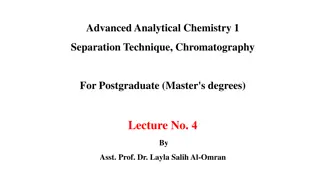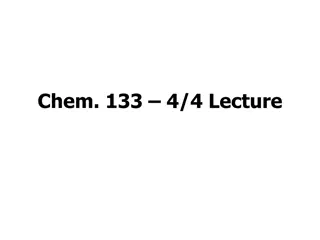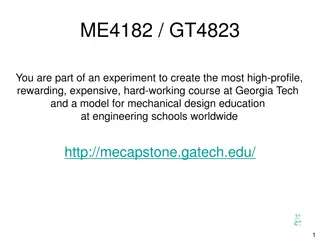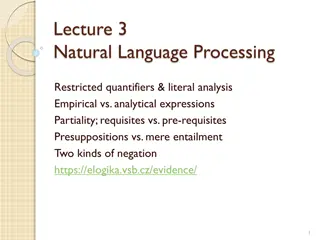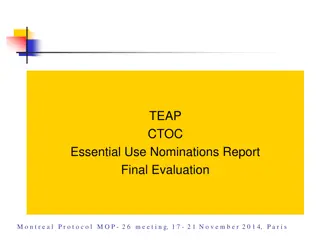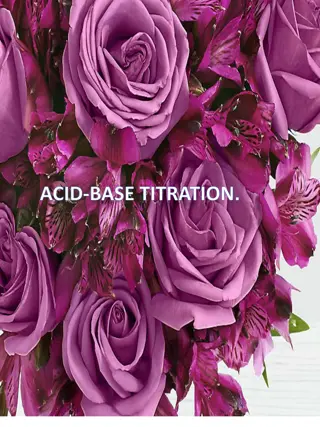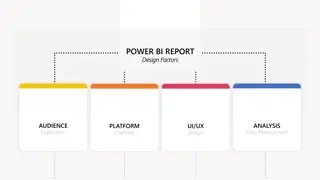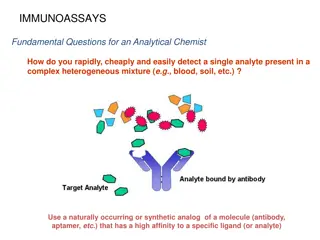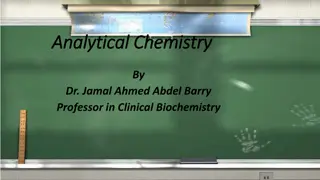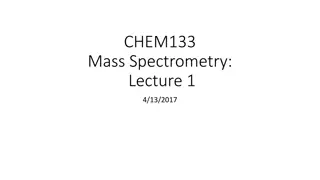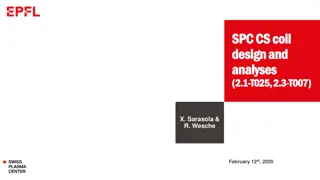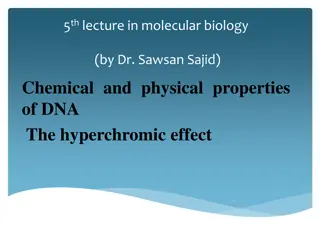Understanding the Applications and Design of Analytical Ultracentrifugation
Analytical ultracentrifugation, a powerful technique in biochemistry, allows for precise measurement of sample properties and characterization of macromolecular complexes. The method is widely used for determining sample purity, equilibrium constants, and assembly mechanisms of biological complexes. The design of analytical ultracentrifugation instruments includes optical systems for measuring sample concentration using absorbance or Rayleigh interference. Preparative centrifugation methods, such as cell fractionation, are also essential for isolating specific organelles in biological samples.
Download Presentation

Please find below an Image/Link to download the presentation.
The content on the website is provided AS IS for your information and personal use only. It may not be sold, licensed, or shared on other websites without obtaining consent from the author. Download presentation by click this link. If you encounter any issues during the download, it is possible that the publisher has removed the file from their server.
E N D
Presentation Transcript
CENTRIFUGATION Dr. Vinod K.V.
Types of centrifugation Based on purpose ANALYTICAL & PREPARATIVE Analytical- measuring the physical properties of the sedimenting particles such as sedimentation coefficient or molecular weight Preparative- Isolate specific particles which can be reused
Analytical Ultracentrifugation Applications determine sample purity characterize assembly and disassembly mechanisms of biomolecular complexes detect and characterize macromolecular confirmational changes measure equilibrium constants and thermodynamic parameters for self- and hetero-associating systems characterize the solution-state behavior of macromolecules under various conditions
Analytical Ultracentrifugation Design analytical ultracentrifuge = preparative ultracentrifuge + optical detection system measure sample concentration inside the centrifuge cell during or after sedimentation centrifugation parameters and data acquisition under computer control experiments lasting many days performed with minimal operator intervention
Analytical Ultracentrifugation Design: Optical systems Absorbance optical system: measurement of sample concentration at from 200 to 800 nm detection of macromolecules containing strong chromophores Rayleigh interference optical system: measurement of sample concentration based on refractive index changes analyze macromolecules lacking intense chromophores (eg, polysaccharides) and samples that contain strongly absorbing buffer components (eg, ATP/GTP) wavelengths
PREPARATIVE CENTRIFUGATION Many types Differential centrifugation (cell fractionation) The process of separation of cell organelles is known as cell fractionation To isolate a specific organelle, the organs are homogenised in suitable medium at 40C. The resulting suspension is called homogenate
Fractionation is done by differential centrifugation This method is based upon the differences in the sedimentation rate of particles of different sizes and density Uses a series of centrifugation steps at successively greater speeds Each step yield a pellet & supernatant The supernatant from each step is subjected to centrifugation in the next step Provides four pellets- nuclear, mitochondrial, lysosomal & microsomal fractions At each step, the pellet is washed several times by resuspending in the homo.medium followed by centrifugation under the same conditions
Density gradient centrifugation Uses a medium that has gradients Eg: Caesium chloride, C. sulphate, sodium bromide, Glycerol, dextran... Separation depends upon the buoyant densities of the particles Two types Rate Zonal technique & Isopycnic technique
Rate Zonal Centrifugation The gradient used has a maximum density at the bottom but density is less than the most dense sedimenting particle to be separated density gradient is shallow Sample is taken at the top as a zone Centrifugation is performed at low speed for short time Depending on the sedimentation rate the samples form discrete zones Must be terminated before the zones reaching the bottom
Application Useful for separating proteins with nearly identical densities but differing slightly in size Used for separation of RNA-DNA hybrids, ribosomal subunits, and subcellular organelles
Isopycnic centrifugation Depends on the buoyant density of the particle Does not depend on shape, or size of the particle Independent of time Maximum density of the gradient always exceeds the density of the densest particle At the point of isodensity, no further sedimentation occur
Application Used to separate particles of similar size, but of differing density Subcellular organelles such as golgi apparatus, mitochondria can be effectively separated by this method






